
Fine Classical, Instrumental, and Specialty Recordings
Label: Soundset Recordings Item Number: SR1023 Format: CD Year Recorded: 2003 Journeys Santa Fe Guitar Quartet Christopher Dorsey - Guitar Mariano Fontana - Guitar Miguel Piva - Guitar Eric Slavin - Guitar
Santa Fe Guitar Quartet 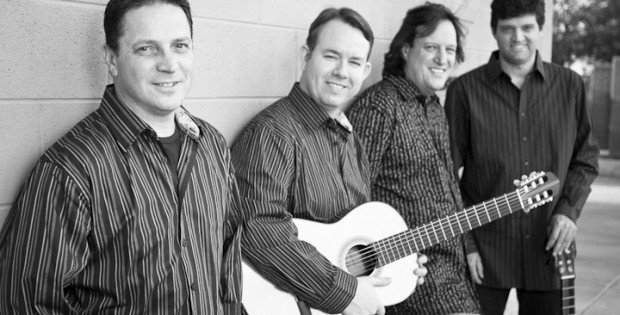 The Santa Fe Guitar Quartet (SFG4), from Santa Fe, Argentina, is an innovative guitar ensemble whose repertoire ranges from Baroque works to modern tangos. The group is strongly committed to the performance of Latin American music, having presented exciting new works to a large audience worldwide. Their full sound is similar to a small string orchestra and was praised by the Washington Post as "big, warm, round and clear." The quartet's addition of the six-string contrabass along with the occasional use of other instruments and percussive effects broaden the range and sound palate of the typical guitar ensemble. Combining the individual talents of two Argentineans and two North Americans, the group has been touring internationally since 1989, both in recital and with orchestra. The Santa Fe Guitar Quartet has performed for sold-out houses throughout North and South America including Lincoln Center and Weill Recital Hall at Carnegie Hall. The Organization of American States, Partners of the Americas, Mid-America Arts Alliance, Community Concerts, Texas Commission for the Arts, and Allied Concerts have all sponsored the quartet in the United States. In 1997, the Argentinean Institute for Excellence (Instituto Argentino de la Excelencia) awarded the Santa Fe Guitar Quartet the prestigious First Prize of Excellence. The ensemble's recordings continue to receive enthusiastic reviews throughout North and South America, Europe, and Asia. Their latest recording, a collection of music representing the diverse expression of composers living throughout the Americas, further demonstrates that the Santa Fe Guitar Quartet is a living example of the merging of the Americas through music. Christopher Dorsey - Guitar 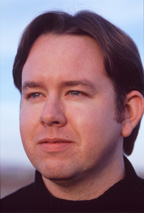 Chris Dorsey was born in Byron, Georgia. He received his BA with John Pell at Belmont University and his MA with William Yelverton at Middle Tennessee State University. Under the direction of Frank Koonce, Chris received his Doctor of Musical Arts in guitar performance from Arizona State University in 2005. The title of his doctoral dissertation is Guarango como guitarra en tango [Awkward as a Guitar in the Tango]: The Rise, Fall, and Rebirth of the Guitar in the Argentinean Tango. In 2000, the ASU College of Fine Arts and the "Friends" of the ASU Center for Latin American Studies awarded Chris grants to study tango in Buenos Aires, Argentina, where he studied with guitarist/composer Hugo Romero. Chris has studied the Suzuki approach with Frank Longay and currently teaches music and guitar at his private studio in Phoenix, Arizona. For more information, please visit www.chrisdorseyguitar.com Mariano Fontana - Guitar 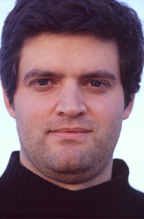 Born in Rosario, province of Santa Fe. At the age of eleven was introduced to the traditional rhythms and harmonies of argentinian folk music and Beatles songs by his ancle "Caco" (who is an amatteur guitarist). Later on he took lessons on theory and solfeggio with Daniel López and on interpretation with Roberto Lovrincevich. During those years he accompanied poetry readers and appeared on different radio and TV shows as a soloist. After having obtaining his degree in Law (though he never worked as a lawyer) he settled down in the city of Santa Fe to study chamber music and guitar with Néstor Ausqui. Ausqui, who was disciple of the great uruguayan maestro Abel Carlevaro, introduced him to Carlevaro's "Technic School" as well as Guido Santórsola's "Harmony applied to the guitar". Miguel Piva - Guitar 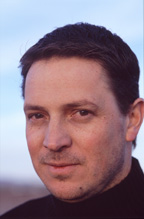 Miguel Piva was born in Santa Fe, Argentina. In 1990, Piva was a first prize recipient in Argentina's Mozarteum Guitar Competition. He has developed a wide range of special effects and percussive techniques that are essential for projecting the special character of Latin American guitar music. Piva studied at the Universidad Nacional del Litoral and worked with Guido Santorsola in the analysis of guitar quartet repertory. He has also studied guitar technique and interpretation with maestros J. Manuel Echagüe and Eduardo Isaac. He has participated in numerous master classes worldwide and has performed on several occasions for the Uruguayan maestro Abel Carlevaro. Piva is also a devoted researcher of the music of Astor Piazzolla. When not touring with the SFGQ, Piva conducts the Santa Fe Choir in performances of sacred and secular works. Eric Slavin - Guitar 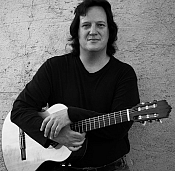 Eric Slavin was born on a United States Marine Base in Hiroshima, Japan. He is a bilingual (English and Spanish) professional guitarist and teacher. He comes from a musical family, and his grandmother, Elena Slavnaia was a celebrated soprano singer who sang at the Steinway Concert Hall in 1931. Eric's musical aspirations started as a child studying piano under the Hungarian pianist, Agi Rado. He later studied guitar and music most notably in Washington, D.C. under John Marlow, Jerzy Sapieyevski and Haig Mardirosian. In 1988 he was an intern with Hector Villa-Lobos in Rio de Janeiro, Brazil. There he met world-class guitarist, Miguel Piva from Argentina and in 1989 he moved to Santa Fe, Argentina. In the ensuing years he had the privilege to study with the most famous Latin American pedagogues and composers such as Abel Carlevaro and Guido Santorsola. Slavin also became a founding member of the award-winning Santa Fe Guitar Quartet. When he is not touring or recording, Eric Slavin is a much sought-after guitar teacher who in the last twenty years has taught numerous master classes, and has been on staff at both El Paso Community College and El Paso Conservatory of Music, El Paso, Texas. Slavin is a graduate of the American University, Washington, D.C. and has a Masters of Music from New Mexico State University. Eric Slavin, in addition to his quartet work, performs as a solo guitarist and is available for concerts, special events, and fundraisers. His first solo CD Serenade (UR Music 2009) includes the music of Ralph Towner, Walter Heinze, Jose Luis Merlin and Philip Rosheger. Astor Piazzolla (1921-1992) Three Modern Tangos La muerte del angel, Mumuki, Escualo In the mid-1950's, Argentine composer Astor Piazzolla began revolutionizing the tango by adding elements of dissonance, chromaticism, rhythmic complexity, and jazz. Piazzolla received death threats from Argentine "nationalists" and tango purists in response to his radical treatment of the tango. Only recently has his music become accepted, both in Argentina and also in concert halls throughout much of the world. La muerte del ángel [The Death of the Angel] (1962) is incidental music from the three-act play El tango del ángel (1962) by Alberto Rodríguez Muñoz. It is heard at the play's end and starts with a tango fugue in three parts that is followed by a section that depicts the desperate fight between the devil and the angel. It has been said that "Mumuki" was a nickname given by Astor to both his Yorkshire terrier and to his second wife, Laura Escalada. His composition Mumuki (1986) is one of Piazzolla's most beautiful creations and is characterized by a simple 3-note melodic motif sequenced over frequently shifting key changes. Piazzolla loved shark fishing at his summer home in Punta del Este, Uruguay. Escualo (1979) [literally "dogfish" or "small shark"] comes from a fruitful periods of relaxation and inspiration there. It is a work of shifting meters that Piazzolla wrote for violinist Fernando Suárez Paz of his second quintet. Pat Metheny (b. 1954) Three Pieces 45/8, In Her Family, Better Days Ahead Guitarist and composer Pat Metheny, born in Kansas City, Missouri in 1954, is one of the most important current voices in jazz. He has redefined the sound and role of the guitar in jazz and as a composer has created beautiful and lush music taking inspiration from Brazilian rhythms and at others times from elements as "American" as the midwestern landscape. 45/8 (1988) from his album Letter from Home is a composition based upon a rhythmic template of 45 eighth notes before a strong downbeat that begins a simple 8-bar phrase written by co-composer and keyboardist Lyle Mays. This performance features a charango, a small, ten-stringed musical instrument made from the shell of an armadillo. The charango is typical in Andean music and other folk music of South America. In Her Family (1986) from the album Still Life (Talking) was written on the last day of summer vacation in upstate New York and is a precursor to other piano-based ballads played with soprano guitar doubling the high register of the piano. Better Days Ahead (1979) also from his album Letter from Home was written on tour with the Pat Metheny Group in Fulton, Missouri. Originally entitled Fulton, it stayed in the Pat Metheny Group's play list for around ten years without ever being recorded. It evokes a bebop harmonic vocabulary with a guitar-based rhythmic accompaniment related to the Brazilian bossa nova. Isaac Albéniz (1860-1909) Two Spanish Pieces Almería from Iberia Aragón, fantasía from Suite española Isaac Albéniz is undoubtedly one of the greatest and most famous Spanish composers of the late 19th century. Though a Catalonian by birth and a composer primarily for solo piano, many of his works imitate guitar playing and the flamenco song and dance forms of southern Spain's region of Andalucía. From 1905 to 1908 Albéniz wrote his masterpiece, Iberia, a collection of 12 impressions published in four books for piano solo, evocative of the sounds and rhythms of his Spain though in a style notably influenced by the impressionistic colors and sounds of the French composers. The beautiful Almería is from the second book and emphasizes color, revealing a greater density of texture in contrast to his earlier piano works. It is an evocation of the Anadalucía of the past. The lively Aragón was first published in 1889 in Paris as the first piece of Dos danzas españolas. However, it is much probably more famous as a part of his popular Suite española. His most extended piano work before Iberia, it is a fantasy based on the jota aragonesa of Aragón that features an authentic popular theme, which is rare in his music. Carlos Guastavino (1912-2000) Two Argentine Romances Muchacho jujeño, Baile Carlos Guastavino, born in Santa Fe, Argentina, was one of the foremost Argentine classical composers of the 20th century. His production totals more than 200 works, most of it dedicated to the piano and to the voice. Included in his opus are three sonatas for solo guitar. An accomplished pianist with an intense gift for melody, Guastavino always wrote effectively for the piano, mastering not only its brilliant and virtuoso aspect, but also the intimate and poetic side of this instrument. His style, always tonal and lusciously romantic, is fully based on Argentine folk music. His distillation of local folk elements into an avowedly romantic-nationalist idiom is natural, and the popular spirit of the original folk melodies and rhythms always remains untouched and fresh, even at moments of complex rhythmic, harmonic, or contrapuntal elaboration. These Two Romances, Muchacho jujeño and Baile, come from Tres romances written for two pianos in 1948 and published in 1951. Muchacho jujeño [Boy from Jujuy] is in the rhythmic form of a bailecito, while the Baile [Dance] is based on a folk dance named "gato." Will Ayton (b. 1948) Prelude and Ricercar for guitar quartet Born in Kansu province China and the son of missionary parents, Will Ayton developed an interest in music of the Middle Ages in the 1970s and later earned a doctorate in music composition from Boston University. He has two distinct compositional styles""one more tonal and traditional, and the other clearly in the language of the 20th century. He now resides in Providence, Rhode Island where he composes and teaches music at Roger Williams University. Prelude and Ricercar for guitar quartet displays the influence of both Oriental culture and the Renaissance. Though perhaps not audibly evident, The Prelude and Ricercar was written during one of the composer's "homage to Villa-Lobos" stages. Ayton wrote that Brazilian composer Heitor Villa-Lobos and his interest in J.S. Bach were the inspiration for the prelude. Characterized by imitation, this ricercar "originally an improvisatory genre of the Renaissance" features a middle section entitled "in the Mist.
Label: Soundset Recordings Item Number: SR1023 Format: CD Year Recorded: 2003 "As guitarists, they are about as good as you can get...they play like angels." -The Washington Post "Yet another set of three "flirtatious dances" by the fascinating Marcelo Coronel proved to be the most demanding yet rewarding of the evening. In particular 'Gato' was passionate and deep; played perfectly by the guitars matching up in pairs, one set going note by note and the other providing lines in which the melody traveled." –The Cerritos Ink "Ever since somebody held Orpheus' stringed lyre against a resonating board, ladies and the rest of us have been seduced by men who play guitars . . . So imagine the effect of four such masters of guitar eliciting the dancing, romantic heart of South American music in the vaulted sanctuary of Church of the Holy Cross on the afternoon of February 5." –The Kingston Daily Freeman "From Heaven by way of Santa Fe" "As guitarists, they are as good as you can get...they play like Angels" –The Washington Post "Each is a solo virtuoso on the guitar, but together, they produce an ensemble sound that is superb in blend and balance, rhythmically precise and, above all, musically wonderful." –Rapid City Journal "The Santa Fe Guitar Quartet proved to be a laid-back group with a strongly lyrical approach to music... Some of these haunting sounds lingered long in the memory." –Dallas Morning News "The SFGQ have found a new and attractive repertory which they perform with devotion, authenticity and remarkable precision." –SOUNDBOARD/Journal for the Guitar Foundation of America "Their musicianship is first rate...For those who value laid-back competence,the evening proved to be a rewarding success." "The city referred to in the name of the Santa Fe Guitar Quartet is not the one in New Mexico but the one in Argentina. Still, the group has North American connections: two members, Eric Slavin and Christopher Dorsey, are North American, and this recording was made in Arizona. The program inventively mixes Latin American and North American influences, taking off from some familiar works by Astor Piazzolla (although Mumuki is not so familiar) but immediately moving into novel territory with arrangements of three pieces by U.S. jazz guitarist Pat Metheny. These include a percussive element that ideally complements the strongly rhythmic aspect of the Piazzolla pieces and throws the more conventional Spanish rhythms of the two Albéniz excerpts that follow into fresh relief. The two concluding works also cast light on the numerous interconnections between the North American and Latin American traditions. Argentine Carlos Guastavino is increasingly often heard in combination with Piazzolla; his output, mostly originally for piano or voice and piano, makes use of Argentine folk rhythms. The two Romances heard here, originally for two pianos, extend the language of Argentine creole music in something of the same way Piazzolla treated the tango. The two final works are again by an American, Will Ayton, again under Latin influence -- his Prelude and Ricercar for guitar, although they don't sound much like Villa-Lobos, were written under the influence of the Brazilian's own encounter with Baroque polyphonic art; they extend Villa-Lobos' ideas in fascinating ways. This disc is beautifully recorded, although the visual presentation is less successful; the white print on a light blue background is virtually illegible. Nevertheless, among the entries competing with the phenomenally successful Los Angeles Guitar Quartet, this is certainly among the most novel and compelling." ~ James Manheim, All Music Guide –St. Louis Post-Dispatch | |||||||||||||||||||||||||||||||||||||||||||||||||||||||||||||||||||||||||||||||||||||||||
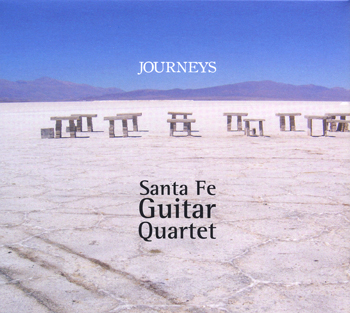
 Amazon
Amazon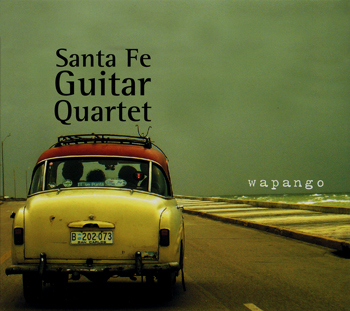
 Follow Us on Twitter
Follow Us on Twitter Follow Us on Instagram
Follow Us on Instagram Visit Our Partner Soundset Recordings
Visit Our Partner Soundset Recordings